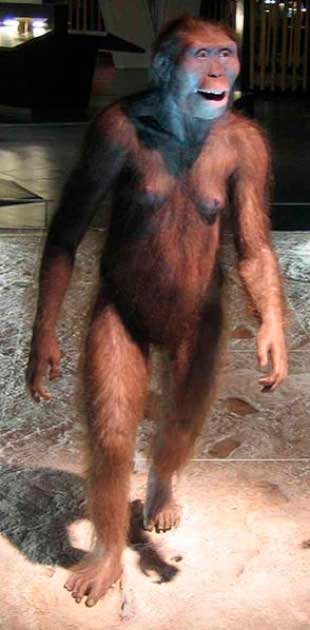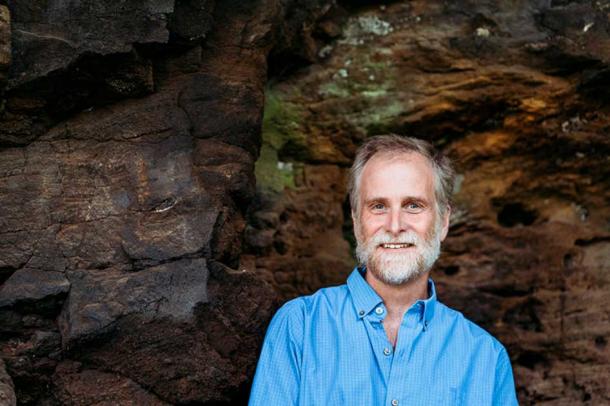Sterkfontein Hominin Fossils Redated To A Million Years Older
Researchers at the Sterkfontein Caves in South Africa, famous for the discovery of ‘Little Foot’ and a ream of other ancient hominin remains, have yielded dating results that could overturn the evolutionary timeline for groups of human ancestors. A latest study has found that some of the Australopithecus hominin remains found in this cave are much older than previously thought – around a million years older - potentially placing them in a different position in the evolutionary tree. The study has just been published in Proceedings of the National Academy of Sciences.
Older than Lucy: Sterkfontein and the Australopithecus
It was all the way back in 1936 when Sterkfontein shot to international fame, with the discovery of the first adult Australopithecus. Australopithecus is a genus of early hominins that existed in Africa during the Late Pliocene and Early Pleistocene. The genus is thought to be the most likely predecessor of the genus Homo, that would eventually give rise to Homo sapiens, or ‘modern humans’, reports Business Insider.
Sterkfontein cave is in the area of South Africa regarded as the ‘Cradle of Humankind’, where a substantial number of the oldest known hominin fossils are found. But it was the famous Australopithecus afarensis individual, Dinkinesh, nicknamed ‘Lucy’ found in East Africa that was widely regarded as the oldest hominin ever found when she was discovered in 1974 in Ethiopia. The fossils from Sterkfontein were dated as younger, placing them further down the evolutionary chain.
But using this latest dating method, the scientists from Witwatersrand and Purdue universities have found the fossils of Australopithecus at Sterkfontein “were contemporaries of other early Australopithecus species, like Australopithecus afarensis, in east Africa,” says Professor Dominic Stratford, director of research at the caves, and one of the authors on the paper.
Based on radiometric dating of volcanic ash, Dinkinesh (Lucy) was dated to 3.2 million years ago, and the new dating at Sterkfontein places the Australopithecus at 3.4-3.67 million years ago. This has “important implications for the role of South Africa on the hominin evolution stage”, says Stratford in a Wits University release.
- Denizens of South Africa’s Cradle of Humankind: The First Walking Apes
- The Dikka Child Toddled Over the Ethiopian Landscape 200,000 Years Before Lucy

A reconstruction of a female Australopithecus afarensis., Natural History Museum, Vienna. (CC BY-SA 4.0)
The Wealth of Sterkfontein Caves
"Sterkfontein has more Australopithecus fossils than anywhere else in the world," said geologist and geophysicist Darryl Granger of Purdue University. “But it's hard to get a good date on them. People have looked at the animal fossils found near them and compared the ages of cave features like flowstones and gotten a range of different dates. What our data does is resolve these controversies. It shows that these fossils are old – much older than we originally thought,” explained Granger, who is the lead author of the current study.
- The Evolution of Human Birth: An Incredible Story a Million Years in the Making
- Preserved Tissue on 2-Million-Year-Old Human Ancestor May be Oldest Skin Ever Found

Darryl Granger of Purdue University developed the technology that updated the age of an Australopithecus found in Sterkfontein Cave. (Lena Kovalenko/Purdue University)
The Sterkfontein Caves in Johannesburg contain more than a third of the world's early hominin fossils, without which the kind of evidence we have about early humans today would not be possible. It would also leave huge gaps in the already difficult to reconstruct evolutionary chain. The new research from the cave titled ‘Member 4’ and the Jacovec Cavern has re-evaluated the age of the hominin fossils found here.
“The new ages range from 3.4-3.6 million years for Member 4, indicating that the Sterkfontein hominins were contemporaries of other early Australopithecus species, like Australopithecus afarensis, in east Africa,” says Professor Stratford.
Science and Methodology Behind the New Dating Process
Granger explain the science and methodology behind the new dating process. Within the scientific community, he is credited with devising a method for dating buried cave sediments. This method has been adopted by scientists and researchers all over the world. Together, with his team, a method called ‘accelerator mass spectrometry’ (acceleration of ions to very high kinetic energies) was used to measure cosmogenic nuclides in the rocks.
The study focussed on the radioactive decay of isotopes aliminium-26 and beryllium-10 found in the mineral quartz, which are formed through high energy cosmic ray reactions near the surface of the earth. The radioactive decay, in turn, helps date when the rocks were buried in the cave, falling in the entrance with the fossils. Earlier, Member 4 had been dated through the calcite flowstone deposits within the cave, reports The Daily Mail. A better method is to actually date the rocks in which the fossils were found.
What This Means for The Evolutionary Chain
“This re-assessment of the age of Sterkfontein Member 4 Australopithecus fossils has important implications for the role of South Africa on the hominin evolution stage. Younger hominins, including Paranthropus and our genus Homo appear between about 2.8 and 2 million years ago. Based on previously suggested dates, the South African Australopithecus species were too young to be their ancestors, so it has been considered more likely that Homo and Paranthropus evolved in East Africa,” adds Stratford.
With the new dating method showing the Australopithecus existing almost a million years before the Paranthropus and the Homo, it implies that they had a lot more time to evolve here. Some of the most interesting fossils like Mrs. Ples are also pushed back by a million years, co-existing with early hominins like Lucy in East Africa.
“The redating of the Australopithecus-bearing infills at the Sterkfontein Caves will undoubtably re-ignite the debate over the diverse characteristics of Australopithecus at Sterkfontein, and whether there could have been South African ancestors to later hominins,” concludes Granger.
Top image: Two of the four different Australopithecus crania that were found in the Sterkfontein caves, South Africa. Source: Jason Heaton and Ronald Clarke, in cooperation with the Ditsong Museum of Natural History / Wits University
By Sahir Pandey
References
Curtis, S. 2022. Fossils of our earliest ancestors in the 'Cradle of Humankind' are one MILLION years older than previously thought, study finds. Available at: https://www.dailymail.co.uk/sciencetech/article-10957571/Fossils-Cradle-Humankind-one-MILLION-years-older-previously-thought.html.
Granger, D.E., Stratford, D., et al. 2022. Cosmogenic nuclide dating of Australopithecus at Sterkfontein, South Africa. PNAS, 119 (27). Available at: https://doi.org/10.1073/pnas.2123516119.
Rosa-Aquino, P. 2022. Ancient fossils in the 'Cradle of Humankind' are more than 1 million years older than previously thought. Available at: https://www.businessinsider.in/science/news/ancient-fossils-in-the-cradle-of-humankind-are-more-than-1-million-years-older-than-previously-thought/articleshow/92504229.cms.
Starr, M. 2022. 'Cradle of Humankind' Fossils May Be a Million Years Older Than Previously Thought. Available at: https://www.sciencealert.com/cradle-of-humankind-fossils-may-be-a-million-years-older-than-we-previously-thought.



















